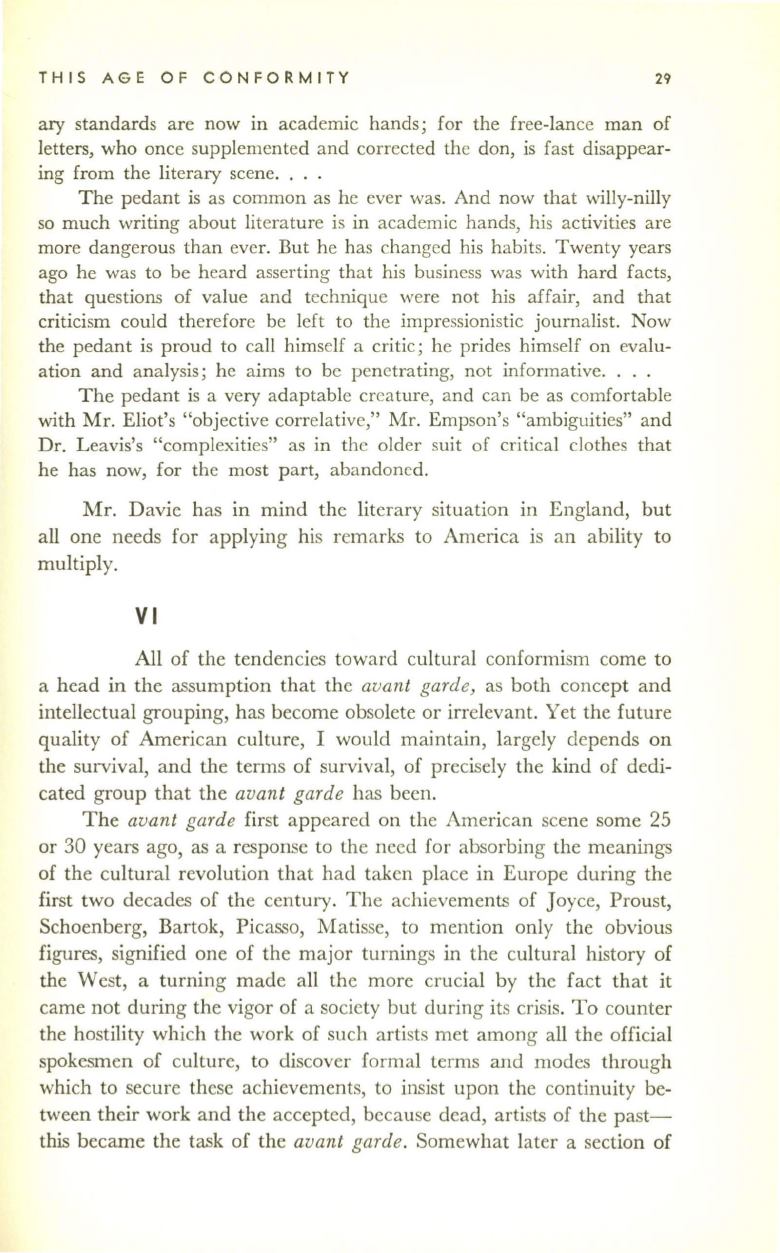
THIS AGE OF CONFORMITY
29
ary standards are now in academic hands; for the free-lance man of
letters, who once supplemented and corrected the don, is fast disappear–
ing from the literary scene....
The pedant is as common as he ever was. And now that willy-nilly
so much writing about literature is in academic hands, his activities are
more dangerous than ever. But he has changed his habits. Twenty years
ago he was to be heard asserting that his business was with hard facts,
that questions of value and technique were not his affair, and that
criticism could therefore be left to the impressionistic journalist. Now
the pedant is proud to call himself a critic; he prides himself on evalu–
ation and analysis; he aims to be penetrating, not informative. . ..
The pedant is a very adaptable creature, and can be as comfortable
with Mr. Eliot's "objective correlative," Mr. Empson's "ambiguities" and
Dr. Leavis's "complexities" as in the older suit of critical clothes that
he has now, for the most part, abandoned.
Mr. Davie has in mind the literary situation
1ll
England, but
all one needs for applying his remarks to America is an ability to
multiply.
VI
All of the tendencies toward cultural conformism come to
a head in the assumption that the
avant garde,
as both concept and
intellectual grouping, has become obsolete or irrelevant. Yet the future
quality of American culture, I would maintain, largely depends on
the survival, and the terms of survival, of precisely the kind of dedi–
cated group that the
avant garde
has been.
The
avant garde
first appeared on the American scene some 25
or 30 years ago, as a response to the need for absorbing the meanings
of the cultural revolution that had taken place in Europe during the
first two decades of the century. The achievements of Joyce, Proust,
Schoenberg, Bartok, Picasso, Matisse, to mention only the obvious
figures, signified one of the major turnings in the cultural history of
the West, a turning made all the more crucial by the fact that it
came not during the vigor of a society but during its crisis. To counter
the hostility which the work of such artists met among all the official
spokesmen of culture, to discover formal terms and modes through
which to secure these achievements, to insist upon the continuity be–
tween their work and the accepted, because dead, artists of the past–
this became the task of the
avant garde .
Somewhat later a section of


